
Find out how to locate and observe the 20 most famous stars of the night sky and, for some of them, even without a telescope.
There is a good reason why we call our best artists “stars”. Both bright and beautiful, stars have been worshiped since the dawn of mankind, often worshiped as avatars of gods or admired as windows to the sky.
But there are also celebrities in the night sky. Some stars of the night sky have become so popular that they have invaded pop culture, whether by their interest in navigation, or just by their pure luminosity in the sky.
Most of them can be seen without a telescope. Follow us on this guided tour of the most famous stars of the night sky. From the fabulous red supergiant Betelgeuse, which is located in the Orion constellation, to Sirius, the brightest star in our night sky which is located in the Canis Major constellation, go out and track them down!

20 famous stars to observe in the night sky
Polaris (Alpha Ursae Minoris)

Constellation: Ursa Minor (Little Bear)
Right Ascension: 2h 31min 49s
Declination: +89° 15′ 51 “
Distance from Earth: 430 light years
Many nomads have found their way thanks to Polaris, also named the North Star or Pole Star. Polaris is located very close to the celestial North Pole.
Throughout the era of navigation and the globalization that followed, Polaris has been linked to navigation, and today helps astronomers in the northern hemisphere to properly align their equatorial mounts to precisely track the celestial sphere.
Polaris is the most useful northern star in human history and it is not surprising that its common name reflects its position. Polaris is the tip of the tail of the Little Bear.
Sirius (Alpha Canis Majoris)
Constellation: Canis Major (Large Dog)
Right Ascension: 6h 45min 9s
Declination: -16° 42′ 58 “
Distance from Earth: 8.6 light years
Torrid, hot and incandescent: these are the words that come to mind when we think of Sirius, the brightest star in the sky. Sirius is actually a binary star with a faint white dwarf star as a companion. Thanks to the power of the Hubble Space Telescope, astronomers were able to photograph this duo.
Because of its declination, Sirius is never very high above the horizon from the temperate latitudes of the Northern hemisphere. It blinks in almost all the colors of the rainbow. Sirius, Procyon and Betelgeuse form the Winter Triangle, an asterism formed by these three stars.

Vega (Alpha Lyrae)
Constellation: Lyra
Right Ascension: 18h 36min 56s
Declination: +38° 47′ 01″
Distance from Earth: 26 light years
The fifth brightest star in our sky is important to astronomers. Not just because it was the first star after our Sun to be photographed, but because it was chosen as a reference from which astronomers can judge the brightness of all other objects in the night sky.
This honor had been granted to Polaris, but Vega finally dethroned it. It turned out to be an incredibly stable star, in terms of variability, as Polaris changed brightness and couldn’t be a trusted benchmark. Astronomers now use a more precise reference, but Vega remains very important for modern astronomy.
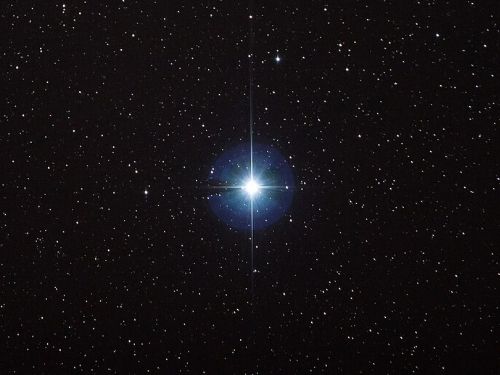
Betelgeuse (Alpha Orionis)
Constellation: Orion
Right Ascension: 5h 55min 10s
Declination: +7° 24′ 25″
Distance from Earth: 430 light years
Betelgeuse is a red supergiant star at the end of its life. It is expected to die in a spectacular supernova explosion. Recent observations have led astronomers to predict that this could happen in the next million years…
Unfortunately, this will make one of the pivotal points of one of the most beautiful constellations disappear. Understanding the huge size of the star is complex, but astronomers think it should be large enough to include everything in Saturn’s orbit if it were located in place of our Sun.
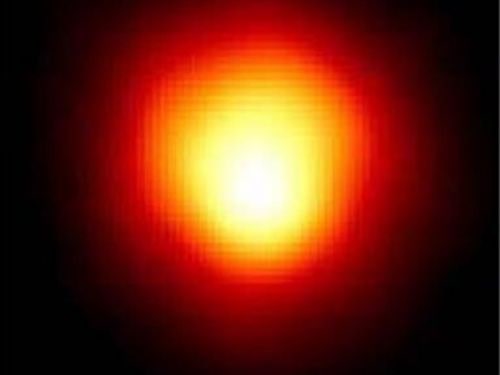
Rigil Kentaurus (Alpha Centauri)
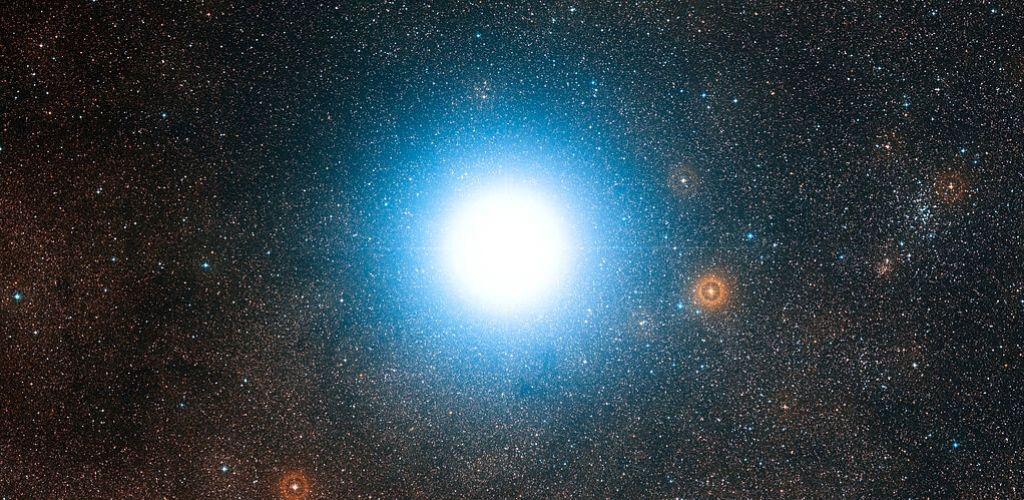
Constellation: Centaurus
Right Ascension: 14h 39min 36s
Declination: -60° 50′ 02″
Distance from Earth: 4.3 light years
The nearest neighboring solar system, Alpha Centauri, is home to two stars very similar to our Sun, and one of them is known to have a planet the size of our Earth. Could it be possible that a habitable world like Earth coexisted with us in our little corner of the Milky Way?
If so, we should be on the verge of finding out, and it would be the most incredible exoplanet discovery so far. With today’s technologies, it would take us 50,000 years to get there. After a further revolution in physics, the 4.3 light-year journey to Alpha Centauri should become manageable. So far, we can only admire this system from afar.
Barnard’s star
Constellation: Ophiucus
Right Ascension: 17h 57min 48s
Declination: +04° 41′ 36″
Distance from Earth: 6 light years
It is the closest star to Earth after Aplha Centauri. Barnard’s star is a low mass red dwarf. Although it is too weak to be seen with the naked eye, it is visible with a telescope. It is also very bright in infrared compared to visible light.
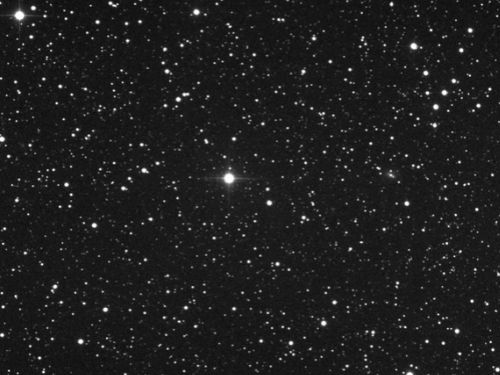
Proxima Centauri
Constellation: Centaurus
Right Ascension: 14h 29min 42s
Declination: -62° 40′ 46″
Distance from Earth: 4.2 light years
Proxima Centauri is the sister star of the binary star Alpha Centauri. It is the closest star to Earth after the Sun. It is a red dwarf, which makes it the closest red dwarf to Earth. It can only be seen through a telescope, although it undergoes random changes in brightness.
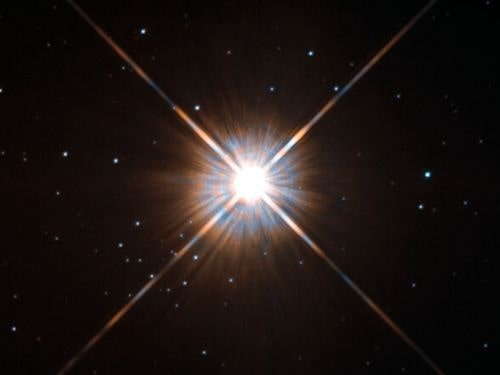
Antares
Constellation: Scorpius
Right Ascension: 16h 29min 24s
Declination: -26° 25′ 55″
Distance from Earth: 550 light years
The brightest star in the Scorpius constellation is a red supergiant. It is one of the brightest stars in the night sky and its apparent magnitude is just below +1. Even at such a distance, it is more visible than the nearest red stars.

Procyon
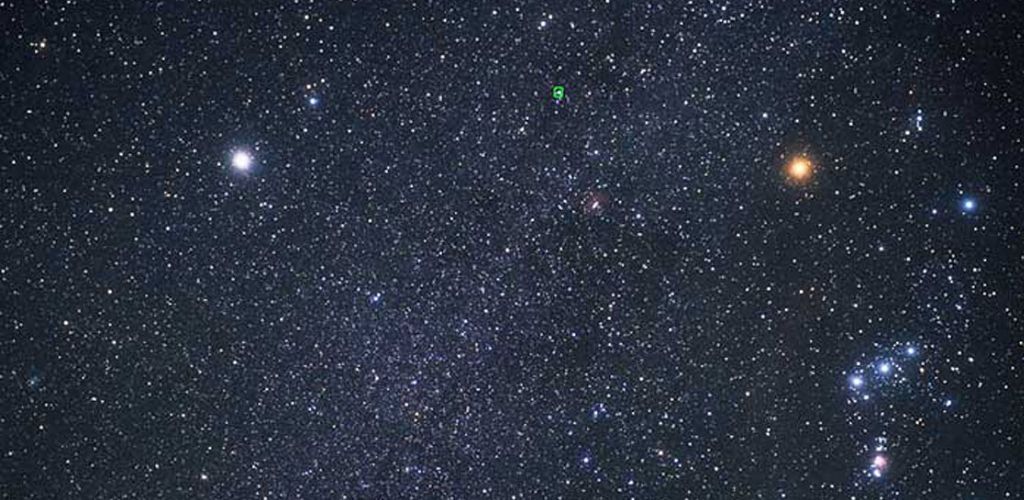
Procyon (top left)
Constellation: Canis Minor
Right Ascension: 7h 39min 18s
Declination: +5° 13′ 30″
Distance from Earth: 11.4 light years
The brightest star of the Canis Minor constellation is the eighth brightest star in the night sky. It is actually a binary star and, much like Sirius, it has a little white dwarf star as a companion. It is one of the stars of the Winter Triangle with Betelgeuse and Sirius.
Canopus
Constellation: Carina
Right Ascension: 6h 23min 57s
Declination: -52° 41′ 44″
Distance from Earth: 310 light years
Canopus is the brightest star in the southern sky and the second brightest star in the night sky. It is also a supergiant. It is very white to the naked eye. Summer is the best season to observe Canopus in the southern hemisphere.
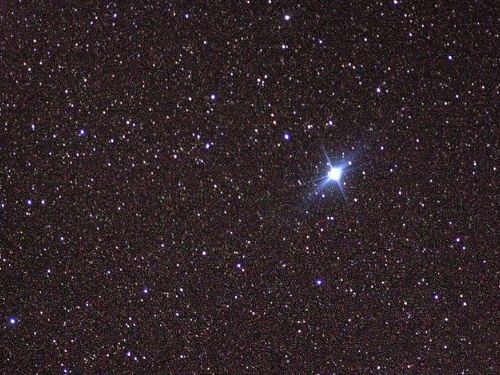
Sigma Octantis
Constellation: Octans
Right ascension: 21h 08min 46s
Variation: -88° 57′ 23″
Distance: 270 light years
If Polaris is considered the North Star, then Sigma Octantis is the South Star. But its magnitude is not particularly large, so unfortunately Sigma Octantis does not have the same importance as Polaris in the north.
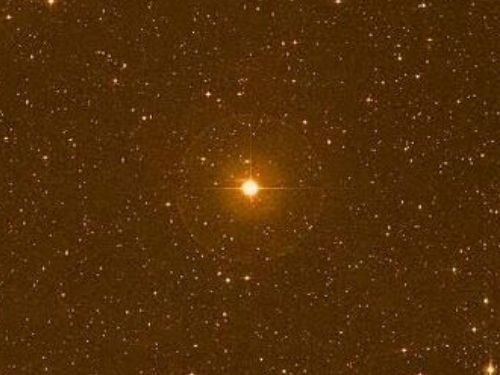
Arcturus
Constellation: Boötes
Right Ascension: 14h 15min 39s
Declination: +19° 10′ 56″
Distance from Earth: 36.7 light years
Arcturus, an orange giant, is the brightest star in the Northern Hemisphere, its magnitude being very close to O. It is believed that it has exhausted its hydrogen and that it is now fusing helium. It should reach the end of its life by becoming a white dwarf in the heart of a nebula.
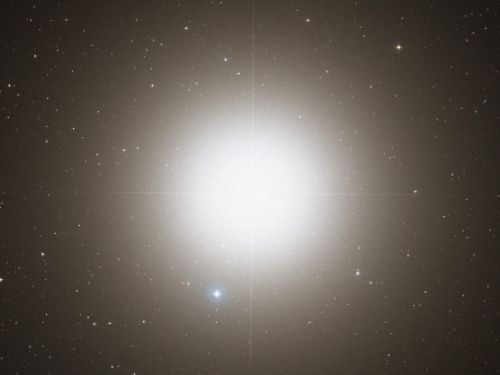
Capella
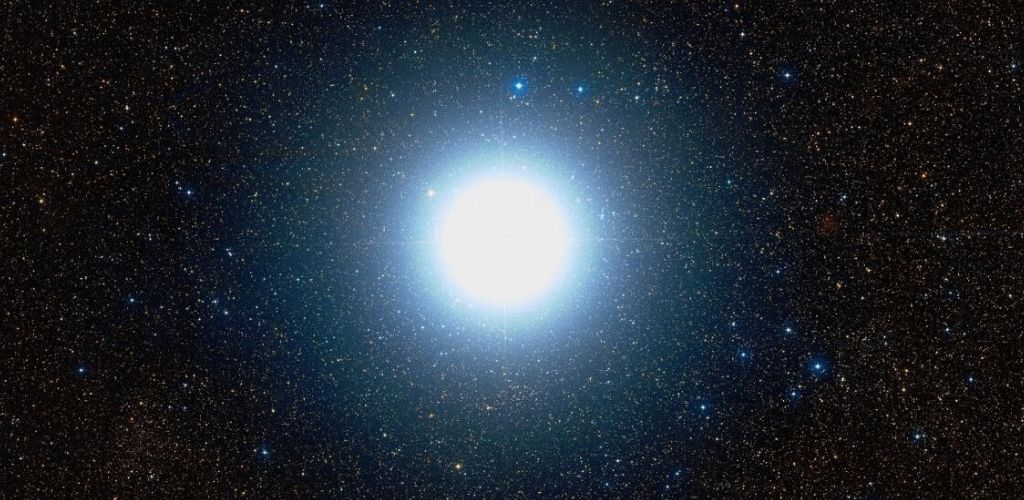
Constellation: Auriga
Right Ascension: 5h 16min 41s
Declination: +45° 59′ 52″
Distance from Earth: 42.2 light years
Capella is another very bright northern star. This is special because it actually consists of four stars, two binary pairs. The first pair consists of two giants with a radius of ten times then radius of our Sun. The other two are red dwarfs.
Altair
Constellation: Aquila
Right Ascension: 19h 50min 46s
Declination: +08° 52′ 06″
Distance from Earth: 16.7 light years
The name Altair comes from an Arabic expression which means “flying eagle”, which is quite suitable for a star in the Aquila constellation. Altair actually rotates very quickly, which crushes it at its poles and makes it non-spherical.
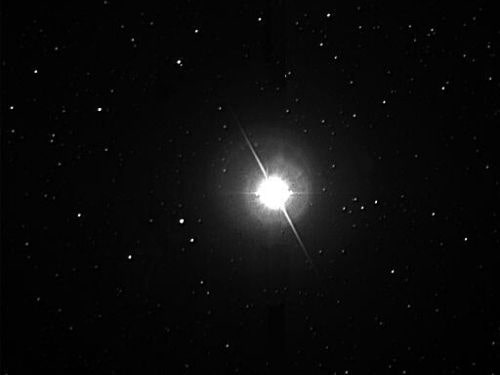
Kapteyn’s Star
Constellation: Pictor
Right Ascension: 5h 11min 40s
Declination: -45° 01′ 06″
Distance from Earth: 12.8 light years
This star is named after the German astronomer who discovered the galactic rotation, Jacobus Kapteyn. It is a red dwarf who took its name when Jacobus Kapteyn noticed that it has a very high own movement and that it moves in the sky every year.
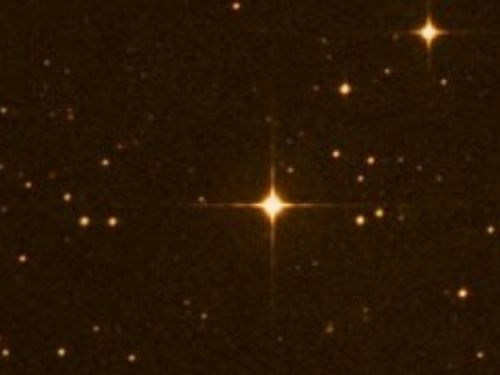
Tau Ceti
Constellation: Cetus (the Whale)
Right Ascension: 1h 44min 04s
Declination: -15° 56′ 14″
Distance from Earth: 11.9 light years
Here is a very interesting star. It is the closest solitary star to our Sun. Initially, we thought that it did not have planets orbiting around it, but evidence suggests that the system has five planets, one of which may be habitable. This could be a candidate for our first interstellar colony.
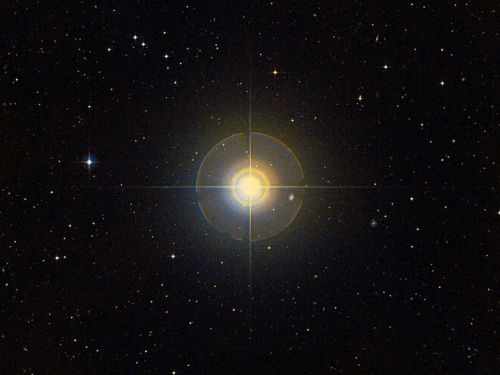
Pollux
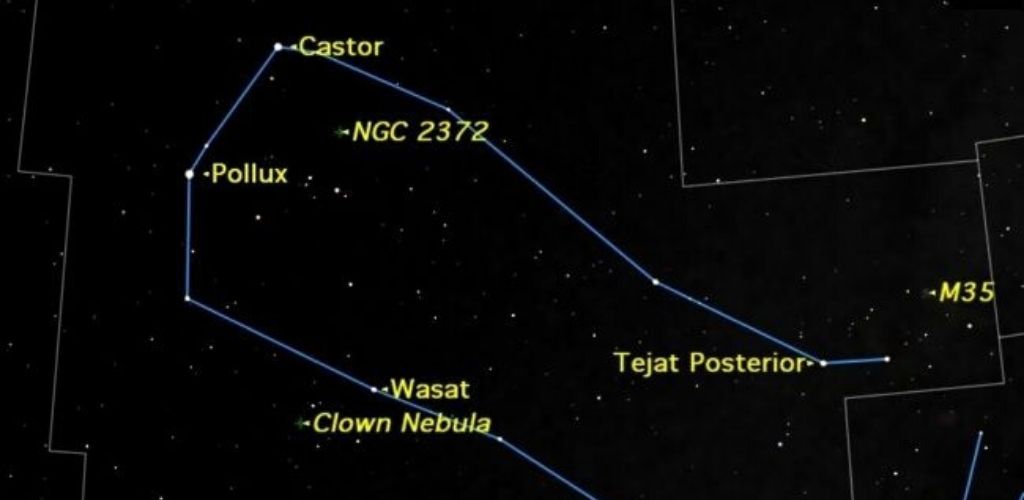
Constellation: Gemini
Right Ascension: 7h 45min 18s
Declination: +28° 01′ 34″
Distance from Earth: 34 light years
Pollux, a giant star with a distinctive orange hue, is the brightest star in the Gemini constellation. This star is important because its spectrum is used as a reference to classify the other stars. It also has a planet that orbits around it.
Rigel
Constellation: Orion
Right Ascension: 5h 14min 32s
Declination: -08° 12′ 06″
Distance from Earth: 770 light years
Made famous by Star Trek, Rigel is a blue-white supergiant and the brightest star of the Orion constellation. It is about 20 times more massive than our Sun and has a radius 74 times larger. Even at such a distance from Earth, it surpasses closer but smaller stars.
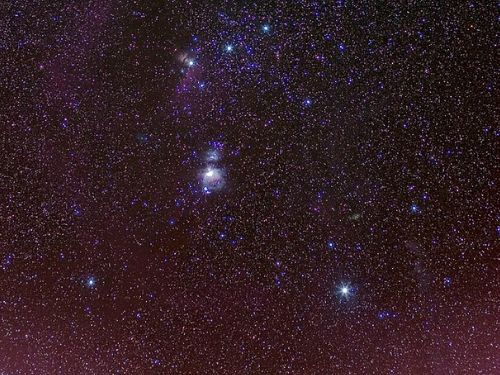
Alnilam (Epsilon Orionis)
Constellation: Orion
Right Ascension: 5h 36min 12s
Declination: -01° 12′ 06″
Distance from Earth: 1,300 light years
The brightest star in the Orion belt is a blue supergiant. It is the star in the middle of this trio, with Alnitak and Mintaka. Alnilam is one of the 57 stars used in celestial navigation. The spectrum of this star is used as a reference for the others.
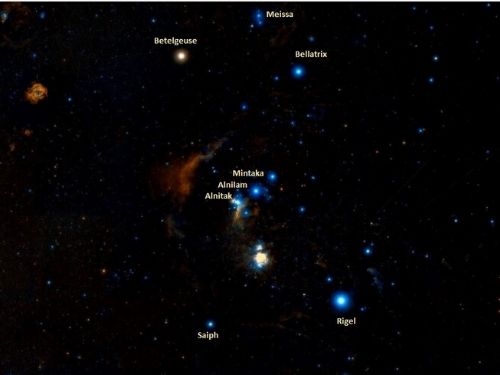
Aldebaran
Constellation: Taurus
Right Ascension: 4h 35min 55s
Declination: + 16 ° 30 ’33 “
Distance from Earth: 65 light years
This other giant red star is the brightest star in the Taurus constellation. Its name means “the follower” because it seems to follow the Pleiades in the night sky. The radius of Aldebaran is about 44 times bigger than the radius of our Sun. But Aldebaran has not even twice the mass of the Sun.
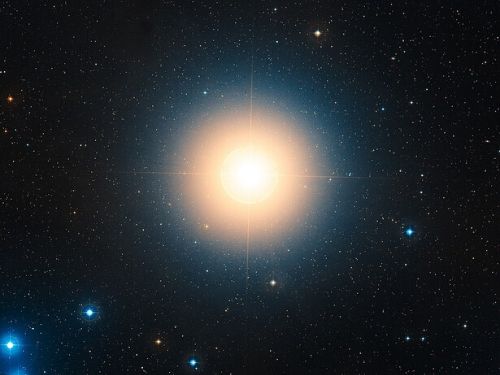

- Images credits:
- Telescope: Photo by Lucas Pezeta from Pexels
- Polaris (Alpha Ursae Minoris): unsplash.com
- Sirius (Alpha Canis Majoris): NASA, ESA, H. Bond (STScI), and M. Barstow (University of Leicester) / CC BY (https://creativecommons.org/licenses/by/3.0)
- Vega (Alpha Lyrae): Stephen Rahn / CC0
- Betelgeuse (Alpha Orionis): NASA / Hubble Space Telescope / Public domain
- Rigil Kentaurus (Alpha Centauri): ESO/DSS 2 / CC BY (https://creativecommons.org/licenses/by/4.0)
- Barnard’s star: MANY WORLDS
- Proxima Centauri: ESA/Hubble / CC BY (https://creativecommons.org/licenses/by/4.0)
- Antares: Judy Schmidt from Fresh Meadows, NY, USA / CC BY (https://creativecommons.org/licenses/by/2.0)
- Procyon: Hubble European Space Agency Credit: Akira Fujii / Public domain
- Canopus: NASA / Public domain
- Sigma Octantis: www.fandom.com
- Arcturus: Mikulski Archive for Space Telescopes (MAST), STScI, and NASA / Public domain
- Capella: Wikisky
- Altair: NASA/JPL/Caltech/Steve Golden / Public domain
- Kapteyn’s Star: ESO Online Digitized Sky Survey
- Tau Ceti: Science&Vie
- Pollux: Starry Night Software
- Rigel: Mouser / CC BY-SA (http://creativecommons.org/licenses/by-sa/3.0/)
- Alnilam (Epsilon Orionis): nineplanets.org
- Aldebaran: NASA, ESA, and STScI / CC BY-SA (https://creativecommons.org/licenses/by-sa/4.0)